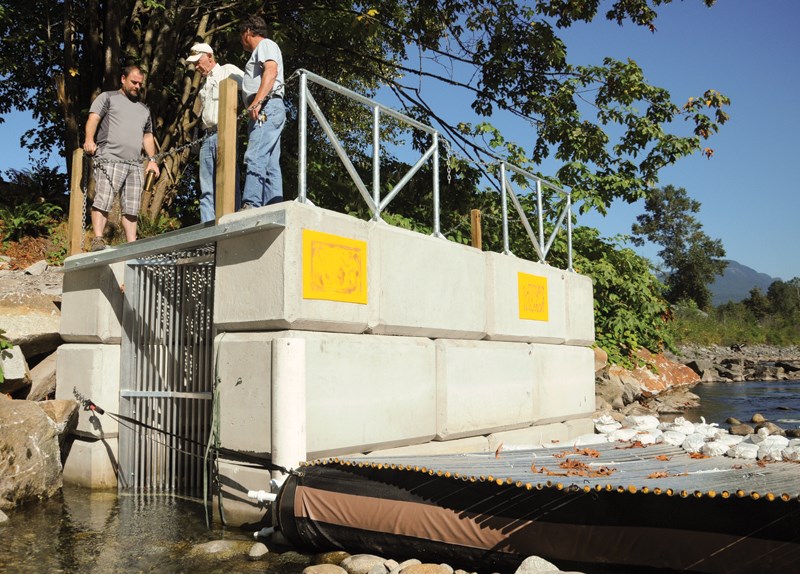They’re back. Early run coho salmon and summer steelhead trout are making their way into the Seymour River, which is now the site of a multi-agency fish rescue project.
Volunteers from the Seymour Salmonid Society have had to physically trap and truck fish up-river since the December 2014 rock slide made the Seymour impassible, but this year volunteers have a newly completed fish fence aiding the operation.
So far, volunteers have netted about 60 fish in the last week, but that number could jump to a hundred per hour, when the run returns in full force, according to Shaun Hollingsworth, society president.
“When the big rains start to happen in September, there’s a big push of fish that comes through. They’ll be fighting to get into the trap to get up-river,” he said.
Some will be taken straight up to the Seymour hatchery, some will be deposited above the rock slide and others will remain in the lower reaches of the river for their natural predators, Hollingsworth said.
The rescue effort has been worked on by members of Fisheries and Oceans Canada, the province, the Squamish and Tsleil-Waututh Nations, as well as Metro Vancouver and the District of North Vancouver. The Pacific Salmon Foundation paid for the fish fence and the City and District of North Vancouver each offered $15,000 to help cover the costs of the trap-and-truck operation. Hollingsworth said local donors have been eager to help as well. Mott Electric donated a shipping container fitted with lights and heating for volunteers to use as a makeshift field office, and Super Save offered a porta-john and money for fuel.
But the fish fence and trap-and-truck program were only a stopgap measure to keep the salmonid runs alive until a much larger project could permanently reopen the Seymour.
Starting next week, crews will begin using explosives to slowly break apart the 50,000 cubic metres of rock that fell into the river. Over the course of several years, it should reopen a slope gradual enough that the Seymour can become a natural fish-bearing body of water again.
“I’m just feeling like ‘Hallelujah,’ Hollingsworth said. ‘We’re in the waiting room in the maternity ward and soon we’ll be popping corks.”
Metro Vancouver, which has jurisdiction over the land, is also now looking to revive the trails that permanently closed as a result of the new pond that formed above the slide.
The Fisherman’s Trail, just north of Riverside Drive, and the Bottletop Trail north of the slide site, both remain fenced off. Trees caught in the flooded area are dying off and falling over and the river water has dangerous suction near the slide site, said Heidi Walsh, acting watershed manager.
“We’ve got staff patrolling down there, warning people about the dangers in the area,” she said.
But Metro engineers are finalizing designs on replacement options for the Twin Bridge, which had to be removed following the slide. Residents can get a look at the design options and give feedback Sept. 24 at Capilano University’s sports complex, from 10 a.m. until 1 p.m.
“We are still getting pressure from people,” said Walsh. It was a long-established trail connection so we totally understand, especially for the residents of that area.”



